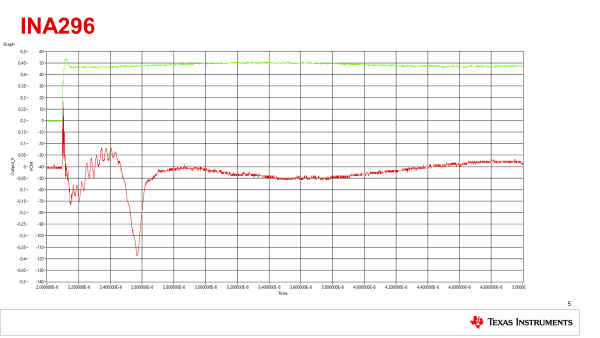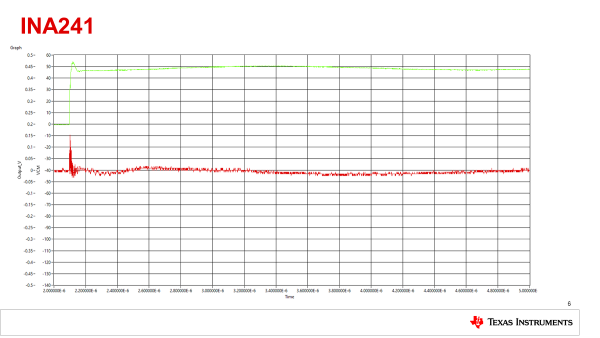Tool/software:
Hi team,
I think INA296 doesn't have Enhanced PWM rejection but CMRR is high. Why is it looks no difference from INA241 at 50kHz?
And could you please let me know what CMRR advantage?
Best regards,
Kento
This thread has been locked.
If you have a related question, please click the "Ask a related question" button in the top right corner. The newly created question will be automatically linked to this question.
Tool/software:
Hi team,
I think INA296 doesn't have Enhanced PWM rejection but CMRR is high. Why is it looks no difference from INA241 at 50kHz?
And could you please let me know what CMRR advantage?
Best regards,
Kento
Hello Kento,
Is this a switching frequency (50kHz)? When there is a VCM(Voltage Common Mode) transient like from a PWM the output could change. If you have a filter at the output you may not see the improvement.
Below is an example of a transition from 0-50V on the VCM as how it impact the output.


Sato-San
Enhanced PWM rejection is designed specifically with high dV/dt switching common mode voltages' - for example, when measuring phase current on a 3-phase motor directly inline with the motor. In such an application, the common mode is switching between ground and a bus voltage very rapidly. This is what Javier is addressing above.
The CMRR specification is used to determine the additional offset error you can expect when the common mode voltage is different than the voltage at which the offset is specified at in the electrical characteristic tables. You can see more on this in out TIPL Video: Common-mode Rejection Ratio. The AC CMRR is related to slowly changing common mode voltage and not an intentionally switching common mode voltage.
In the case of the inline motor application, you will essentially have two different offset voltages - one when the common ode is ground and a different value when the common mode is at the bus voltage. You can calculate the two values based on CMRR as described in the video.